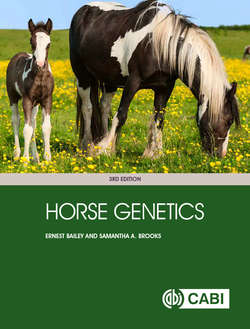Читать книгу Horse Genetics - Ernest Bailey - Страница 36
На сайте Литреса книга снята с продажи.
Species Hybrids
ОглавлениеDespite extensive chromosomal differences, the various equine species generally can be successfully crossed to produce viable progeny. In the late 1800s, a series of experiments was conducted to construct hybrids between zebras and horses and these were described in a book called The Penycuik Experiments (Ewart, 1899; now available as a digitized book). Such hybrids show that, despite extensive chromosomal and genomic changes, the overall genomic content is similar within the genus Equus and viable offspring can be produced. However, the hybrids are usually sterile, probably due to the differences in chromosome arrangements and failure to produce viable gametes following meiosis. During meiosis in hybrids, the chromosomes of the two parent species pair undergo recombination of DNA between chromosomes. However, because the genes are organized on different chromosomes, the resulting sperm and eggs have unbalanced numbers of genes and are non-viable. Even simple chromosome rearrangements that are sometimes observed in horses can result in unbalanced gametes and reduce fertility. With so many chromosome differences among Equus species, hybrids of distantly related equids are sterile. Only hybrids between closely related species, such as between the horses or among the hemiones, produce fertile offspring and, even then, hybrids are likely to have reduced fertility.
